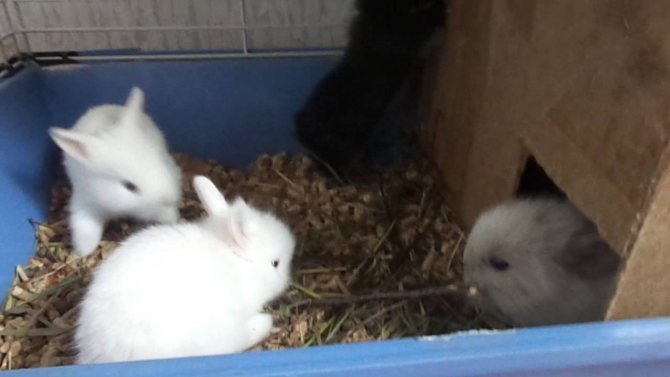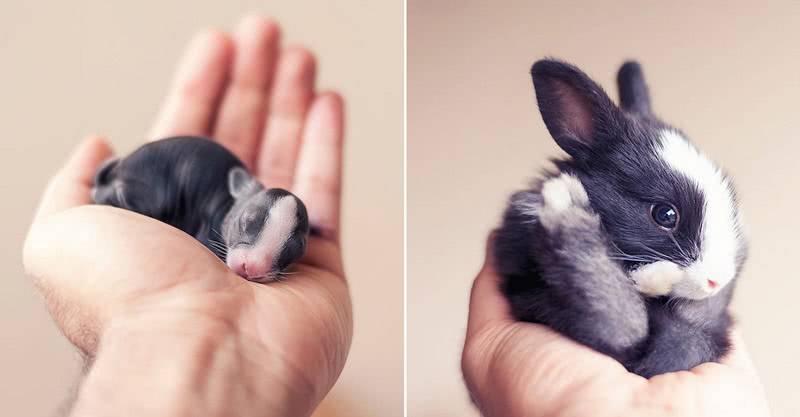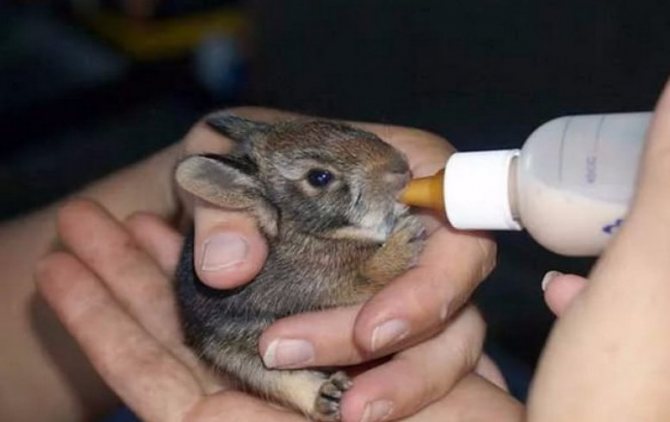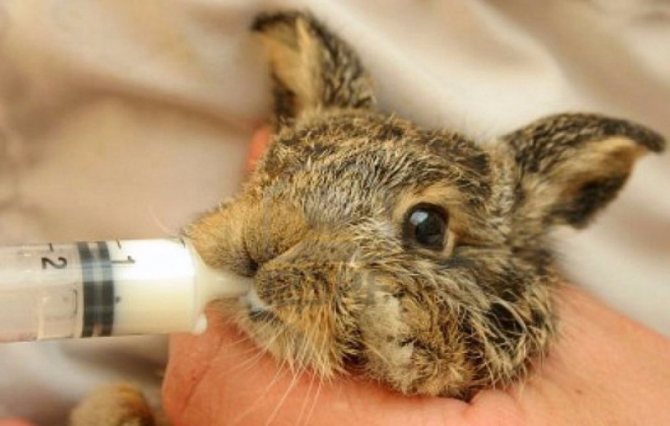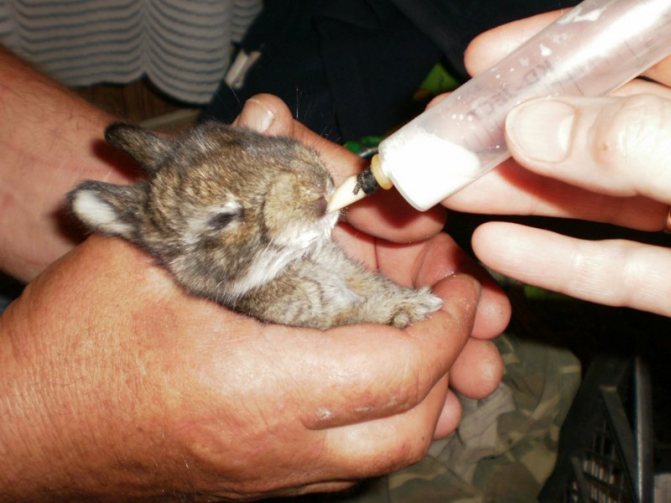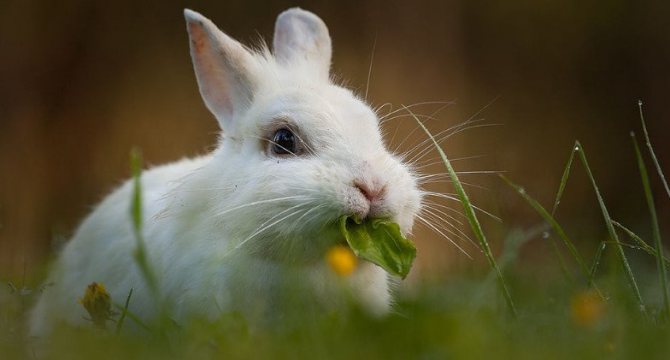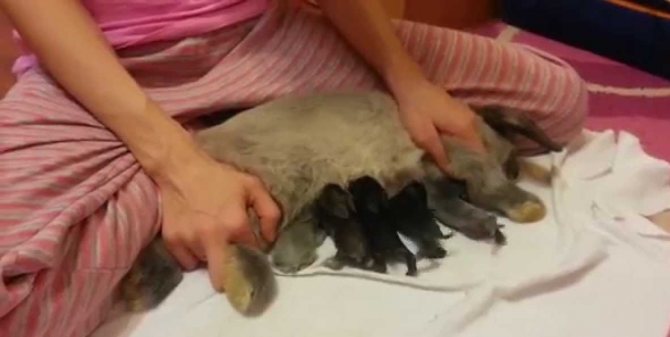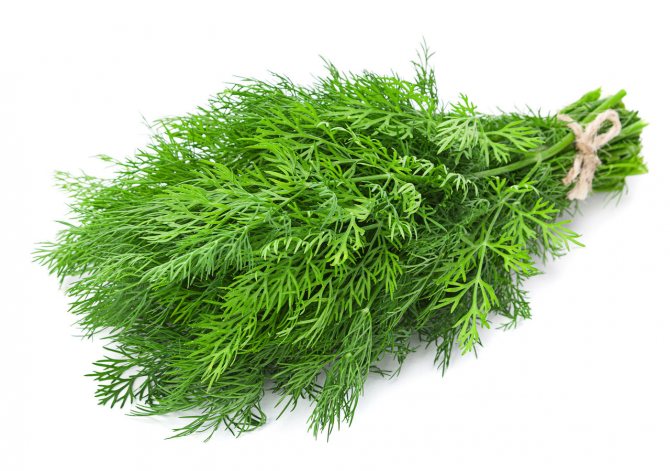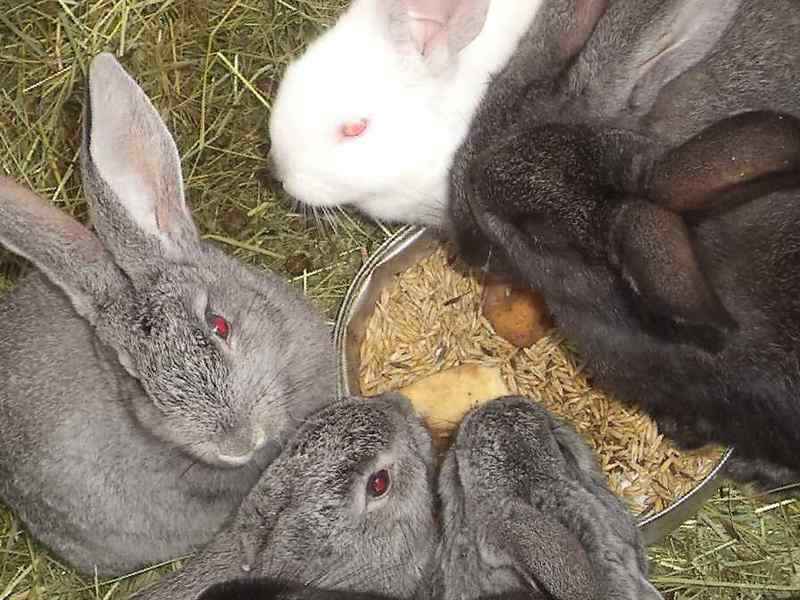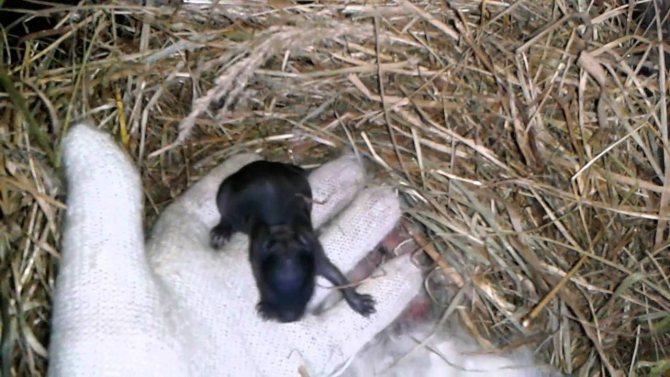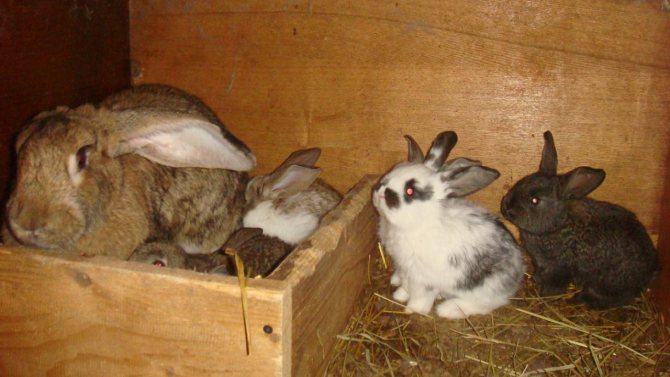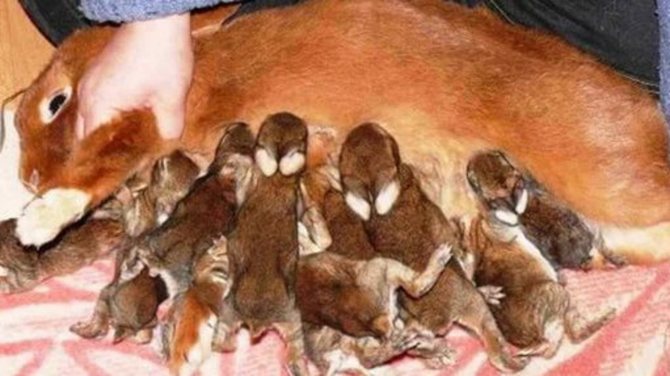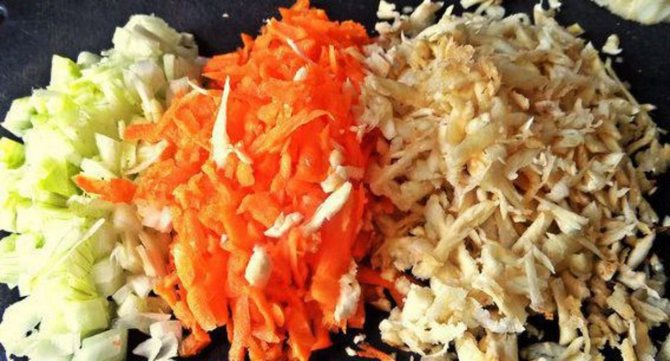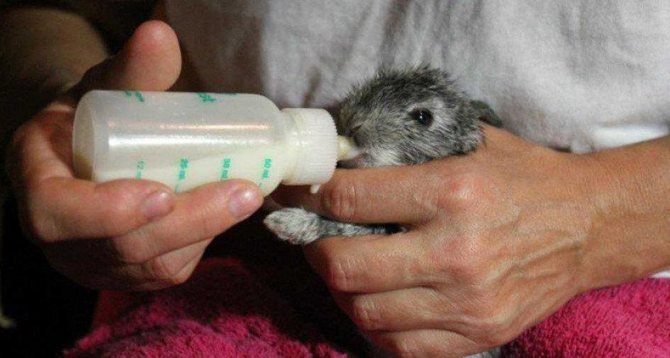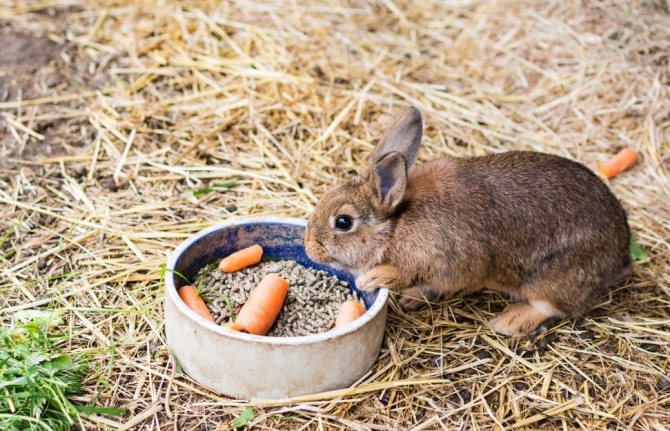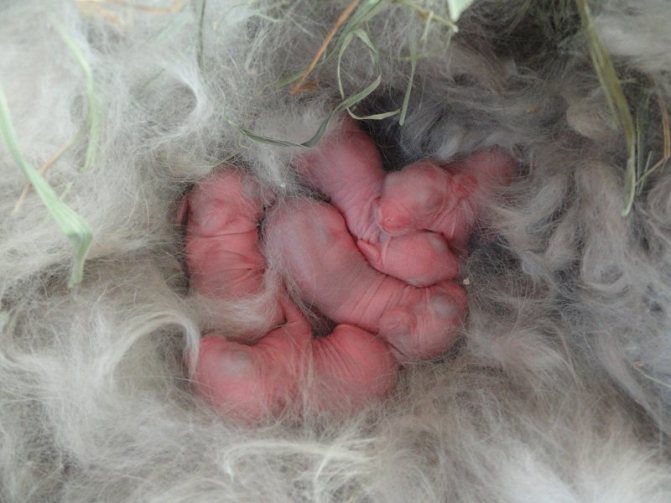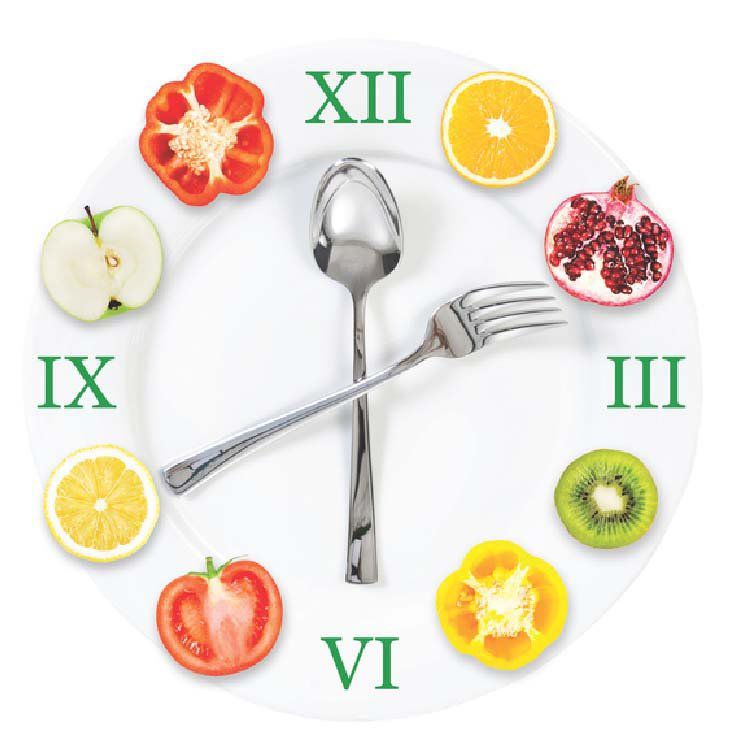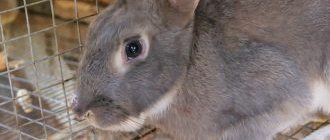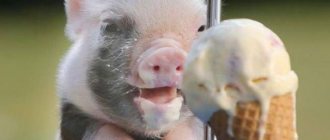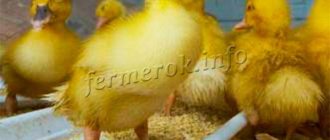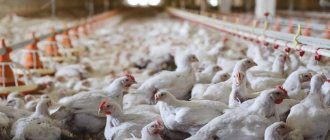Anyone who breeds rabbits knows how troublesome it is to give birth and raise babies. Despite the fertility of animals, part of the offspring dies at an early stage: some freeze, others lack food.
Rabbits are often to blame. One female does not have milk, another mother may simply refuse to feed the babies. There are also such females who, not having time to give birth, die. To preserve the brood, you need to know how to feed rabbits without a rabbit.
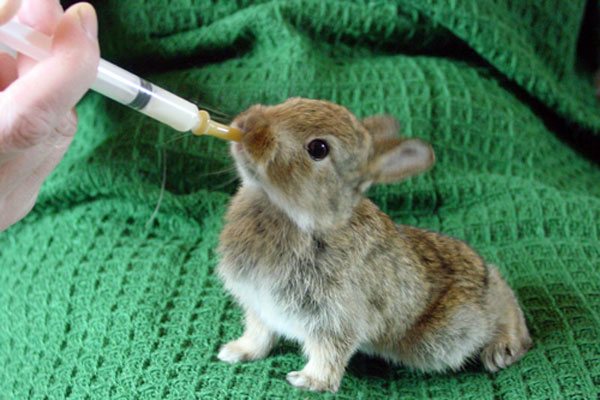
To preserve the brood, you need to know how to feed bunnies without a rabbit
Diet of a sprouted female
It is necessary to constantly feed the female, since her body spends a lot of energy and nutrients on the production of lactation products. The amount of milk produced reaches 170 g per day. To compensate for the loss of protein, to feed eight babies, it is necessary to add up to 70 g of crude protein to the female's diet.
During the lactation period, the requirements for food for the female increase several times. It is advisable to change the type of feed every week, alternating oats, bran, mineral supplements, corn and greens.
Diet of a sprouted female
The feeding scheme of a lactating female at different ages of rabbits:
- From the first to the tenth day of feeding - 320 g;
- 11 to 20 - 440;
- From the beginning of 4 weeks to a month - 560 g;
- Starting from one month of age of the offspring - 700 g.
In winter, hay from legumes, root crops, boiled potatoes, and succulent silage are considered the best food for a rabbit during lactation. In summer, it is useful to give nutritious green plants - clover, alfalfa.
Concentrated feed at any time of the year should include peas, oats, bran. During lactation, 150-200 g of hay, 50 g of cake, 10 g of meat and bone meal are additionally given.
Minerals are included in the rabbit's diet without fail.
Important! An insufficient amount of them leads to a decrease in the amount of milk produced.
In order for the female to give more milk, it is required to feed her with dried lactic green fodder. Dill or parsley shoots will help with this. Various mash mixtures are useful for feeding a lactating female, for example, in a 6: 3: 1 ratio of oats, alfalfa and mineral supplements.
How to feed rabbits without a rabbit
In case of the death of the rabbit or her illness, the livestock may be left without breast milk. In this case, you will have to feed the young livestock with your own hands, using artificial feed and milk from other animals.
How to feed little rabbits up to a week
You can feed babies up to a week only with the use of milk from other animals or dry substitutes. Milk from cattle or small ruminants works well. If they are absent, artificial substitutes will do.
To saturate the body of a young livestock with a sufficient amount of nutrients, when feeding cow or goat milk, it must be diluted with unsweetened condensed milk in a 1: 1 ratio. The milk mixture is mixed with condensed milk in a 1: 2 ratio. Goat milk is given to babies unmixed, without the addition of condensed milk.
You can inject the mixture into the mouth of the rabbits with a syringe or make a nipple with your own hands. To do this, you need an empty penicillin vial, then secured to the top of the nipple from the pipette cap.
Rabbits are fed 3-5 times a day:
- The first time is in the early morning;
- 3 times during the day;
- In the evening, 1 time.
Feed exclusively with milk for up to 7 days.
Advice! It is preferable to goat, since in structure it is most like a rabbit.
How to feed two week old rabbits? At this age, the amount of food doubles, and the frequency of food is cut down to three times a day. At the end of the second week, the milk dose is tripled.
What to feed rabbits from one week of age?
In the early days, it is very difficult to feed a baby. To accomplish this, you need to take a cotton swab, soak it in milk, then wipe your lips with it. When the baby licks his lips, the procedure is repeated. After he gets used to the taste, you can move on to the nipple or syringe.
Important: in the first days of life, it is necessary to massage the abdominal cavity of the baby. Cleanse the body with a damp cloth, rinse the muzzle especially thoroughly.
Rabbits are 20 days old, what to feed if the rabbit abandoned
At this age, babies can eat independently from a bowl. Feeding babies with milk is carried out up to 30 days. Then you can introduce hay or carrots with wet feed. Wet mash mixes can be fed fresh in small quantities.
Rabbits 20 days
Additionally, you can buy grass in granular form for feeding at a veterinary pharmacy. One serving should be 3% of the rabbit's weight.
From the age of one month, the amount of water additionally increases. To begin with, water is given with a nipple. In the future, when they begin to consume the liquid themselves, you need to monitor the completeness of the drinkers. Milk feeding continues until the age of one and a half months, then there is a smooth transition to the normal menu.
Up to what age does the rabbit feed milk
Rabbit milk is a very valuable and nutritious product for her newborn babies. For 2 weeks, the body of the rabbits is not able to accept any other food, except for the mother's milk. Therefore, very early jigging of small eared eared has a negative effect on their further development.
After 14 days, the rabbits are introduced to complementary foods, but nevertheless, mother's milk remains the main product in their menu until the babies reach 2 months of age. During this period, it is very important to monitor what their mother eats and what kind of relationship she has with her offspring.
Find out what you shouldn't feed rabbits at home.
How to feed young animals after jigging
When the offspring is weaned, the young can feed on hay and equivalent feed from the adult menu. At first, they add a similar food that they ate with a lactating female. Then the food is gradually replaced. How to feed monthly rabbits will not be a problem, their menu is already quite extensive.
How to feed rabbits at 1 month:
- Greens or hay;
- Vegetables - boiled potatoes, zucchini, pumpkin;
- Hay flour;
- Chopped carrots;
- Oats;
- Moistened compound feed;
- Bone and fish meal.
From the fourth month, you can switch to a fully adult diet. The percentage of combined feeds is gradually decreasing due to the high content of lipids, which are harmful to rabbits when the norm is exceeded. Especially a lot of greenery and hay.
Read also: Yucca care in autumn preparing for winter
The composition of the diet in winter:
Animals are fed 3-4 times a day. The remains of one of the feeds indicate that the rabbits cannot feed on it. It is necessary to reduce its amount.
Monthly
Young rabbits after the age of 20 days and up to a month can already chew food themselves. This is due to the fact that after the 20-day milestone, rodents will partially change their teeth, some of the milk ones will be replaced by permanent ones. For monthly pets, milk is no longer so necessary, it takes about 25% in the diet.Fortified rabbits begin to give more hay, green mash, bran, dried wild plants. After a month, many breeders generally transfer their rabbits to an adult diet.
All the time since the gradual decrease in the milk fraction and the increase in the proportion of solid and juicy feed, babies also need clean water. The more rabbits drink, the less kidney problems they will have. Youngsters must be forced to drink (from a syringe), if they do not drink themselves. Until the age of 30-45 days, it is better to compensate for the liquid not with water, but with milk, especially in winter.
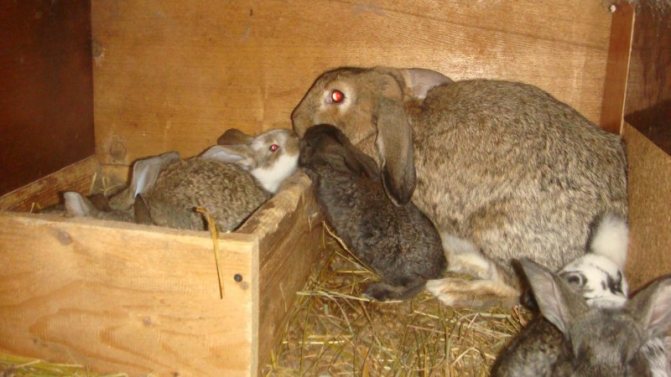

What should not be given to rabbits
Some foods are prohibited for feeding young rabbits. They can lead to poor performance or problems with the gastrointestinal tract:
- Cookies and sugar-containing foods;
- Mushrooms;
- Bread and baked goods;
- Wet vegetation (causing bloating)
- Spicy and fatty foods;
- Rotten food waste;
- Toxic plants;
- Tomato and nightshade tops.
Feeding rabbits is a complex and demanding process. Young mother rabbits may refuse to feed the herd. Therefore, it may become necessary to feed them yourself. Starting from the second week, supplements are added to the diet of the rabbits. At this point, you can give adult meals in small portions twice a week. By one and a half months, the offspring menu changes to match the adult. The portions increase every month. By the fourth month of life, animals completely switch to normal nutrition.


Proper feeding of rabbits from the first days of life is the key to successfully raising a healthy livestock. Rabbits are very vulnerable and after birth require special maternal care, and the main task of the breeder is to ensure a smooth transfer of pets to complementary foods and, in the future, to a full-fledged diet of adult animals.
Rabbits and food
Basic rules for feeding rabbits
Young rabbits are characterized by the late formation of the digestive system, which is unable to cope with heavy and rough food. It should take about 3-7 days to introduce a new product into the diet, which will avoid painful reactions and the death of rabbits. Another distinguishing feature of baby rabbits is their rapid growth: at 4 weeks, babies weigh 10 times more than at birth. All these factors make it necessary to comply with important rules when solving the problem of how to feed the little rabbits:
- the first 2 weeks after birth, babies should feed on mother's milk, if for some reason this is not possible, the rabbits are transferred to artificial feeding with cow or goat milk;
- for growing healthy strong rabbits, a phased feeding system is used, which provides for a gradual increase in the nutritional value of the feed;
- small rabbits need an easily digestible protein and a full set of vitamins and nutrients;
- root crops that are introduced into the diet of young animals should always be thoroughly washed and crushed, cereals - crushed;
- it is not recommended to feed the rabbits with fresh grass; it must be dried before serving to the animals;
- for full development, rabbits need to be given complex vitamin supplements.
Diet depending on age
The diet of young animals changes almost every week due to the rapid growth of animals and changing needs for nutrients. That is why it is important to select the diet in exact accordance with the age of the animals.
2 weeks
Newborn rabbits should be fed on breast milk. In this case, not only the normal development of animals will be guaranteed, but also protection from infections will be provided. During this period, it is important to pay maximum attention to the complete and sufficient feeding of the rabbit. Its daily serving should be increased by 15-20% and nutritional supplements containing vitamins and minerals should be included.
The introduction of supplementary feeding into the diet of newborn rabbits is justified only if they are gaining weight poorly. In this case, they begin to accustom them to dry food and hay, maintaining the frequency of feeding 5 times a day.
20 days
Age 20 days from birth is a turning point. The animals begin to grow new teeth, which is an indirect sign of readiness to try harder and rougher food. During this period, feeding rabbits requires the addition of fresh grass (previously dried from moisture) and dry complementary foods to the diet. Also, in the cage, where the rabbits are still with their mother, clean water should be supplied. At first, babies are given complementary foods 2-3 times a week, after which they can switch to daily feed additives.
1 month
At the age of one month, milk feeding should account for no more than 20% of the diet. It is replaced by dry food, grass, hay, mash. You need to train rabbits to eat foods rich in fiber, which has a beneficial effect on bowel function.
Important! After reaching the age of one month, babies enter an important stage of jigging from their mother and weaning from her milk, so the animals can experience stress. It is important not to radically change the composition of the usual feed, to ensure a full supply of nutrients. Veterinarians recommend adding B vitamins to food, which will support the nervous system of rabbits.
2 months
2 months is the deadline when the young should be removed from the mother. Feeding young rabbits at this age already includes a large list of products: dry food, freshly cut dried grass, bran, fresh vegetables in small quantities. It is important that the rabbits have constant access to clean water.
Fresh vegetables in the diet of rabbits
Is it possible to do without a rabbit
Newborn rabbits are still naked and for the first days are under the mother's cover, continuously sucking on the breast. A two-week-old rabbit is already covered with a tender short fluff and begins to crawl out of the nest.
The farmer does not even have a question of how to feed rabbits without a rabbit at 14 days of age. Babies are already partially switching to food intended for the mother. But how to feed a very small sucker if mom is not around?
Additional Information. With a large litter, breeders in such a situation select part of the rabbits weighing at least 60 g and transfer them to biofarms. Basically, they get rid of the males. The little ones remaining in the household try to go out on their own.
Feeding the young after weaning from the rabbit
After the rabbits have matured and no longer need the constant presence of their mother, they are transferred to an "adult" diet. To gain weight quickly and provide animals with all the necessary nutrients, veterinarians recommend using ready-made dry feed mixtures. You can cook them yourself by taking the following finely chopped foods:
- hay or grass - 35%;
- barley - 25%;
- sunflower cake - 20%;
- corn - 15%;
- wheat bran - 5%.
In the diet scheme of grown rabbits over 60 days old, grass flour (40%), ground oats (23%), ground barley (23%), wheat bran (10%), sunflower cake (3%), salt (0, 5%), bone meal (0.5%), synthetic lysine (0.23%). In the summer period, young greens, boiled potatoes, chalk, vitamin and mineral complexes may be present in the diet of rabbits.
Vitamin Supplements
For the full development of rabbits, it is necessary to receive organic substances with a high level of biological activity along with food. According to statistics, 30% of animals that are raised in farms and households are deficient in vitamins and minerals.Many breeders ignore the recommendations of veterinarians on the addition of vitamins to the diet, which can lead to various diseases and developmental delays. The diet of animals must include:
- vitamin C (a deficiency not only weakens the immune system, but also provokes loss of teeth and hair, bleeding of the gums);
- vitamin A (lack of causes of disturbances in the digestive system and increased lacrimation);
- vitamin D (deficiency provokes growth retardation, deformity of the paws, curvature of the spine);
- vitamin E (deficiency causes insufficient muscle development, dulling of the coat);
- vitamins of group B (lack of causes weakness, loss of appetite, the appearance of bald patches).
The most common vitamin supplements are Chiktonik, Prodevit, Bio-iron, E-Selenium.
Bottle-fed rabbits
Artificial feeding is necessary if the rabbit refused to feed the babies or died for some reason. To replace mother's milk, the most suitable milk composition or ready-made formula is selected.
Artificial feeding of rabbits
Mix selection
How to feed the rabbits in the absence of breast milk depends on the age of the babies:
- Up to 7 days. At this age, pure goat's milk, cow's milk diluted 1: 1 with unsweetened condensed milk, dry milk mixture prepared in double concentration are suitable for feeding. Rabbits are fed 3-5 times a day in a volume of about 1 ml.
- 7-20 days. They use the same dairy products as before, while the volume of food is doubled. At 15 days, the serving size should be increased by 3 times. Rabbits are fed 3 times a day.
- 20 days – 1 month. Goat or cow milk, diluted in the above proportion with condensed milk, at this age, babies can drink straight from the bowl. Closer to the age of one month, babies can gradually add grated carrots, wet feed, hay to their food. Portions at this age are calculated as 3% of the weight of the animal.
- 1 month or older. After reaching one month of age, there should always be clean water in the cages with babies. To accustom the rabbits to water, you can first drink them from the teat. Up to 45 days, animals can be kept on a dairy diet, and after that the question of how to feed monthly rabbits is decided by a smooth transition to adult food.
Read also: Khrushchev 2 room design photo without redevelopment
Feeding rules
When artificial feeding is used, it is important to maintain cleanliness and hygiene. The teats and equipment used should be doused with boiling water. It is necessary to organize a warm, cozy nest where newborns will feel comfortable. To do this, until they are overgrown with wool, a heating pad is placed in the cage.
Important! In the first days after birth, bottle-fed rabbits need to massage the abdomen and wipe the body with a damp cloth (muzzle, body and anus).
For feeding babies, it is necessary to make a comfortable pacifier, for which a penicillin bottle and the rubber part of the pipette are suitable. It is better to buy formula for feeding in a specialized pharmacy. Ready-made puppy-feeding products or regular milk powder are suitable.
It is necessary to carefully monitor the timely emptying of the intestines of the rabbits. To do this, they gently massage the tummy with two fingers (the first 2 weeks of life). Small rabbits' feces should be green.
Types of feed
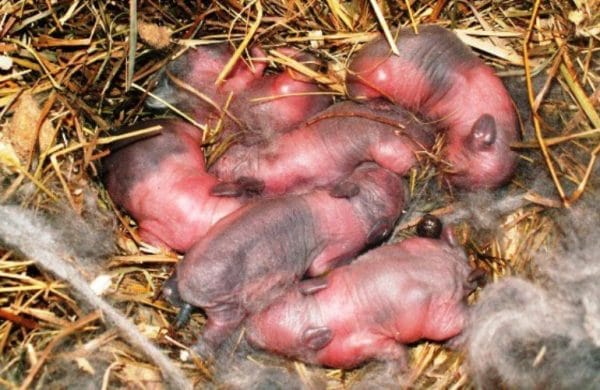

Babies are born completely naked and blind
There are several ways to replace mother's milk, but they will not give a small body a similar amount of nutrients. There are several options that can be used for these purposes.
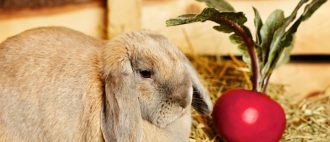

Be sure to read:
Is it okay to give rabbits red beets and raw potatoes, tomatoes or cucumbers, carrots and tops
Cow's milk
Cow's milk is used in this situation if there are no other options. The chemical composition, fat content of products are completely different, therefore it is poorly absorbed by a fragile body.
You can satisfy your needs only by adding condensed milk without sugar. The mixing ratio is 1: 1.
Goat milk
Goat's milk is preferred over cow's milk.
In composition, it is closer to the rabbit, but the latter is fatter. Its use allows us to hope for successful feeding and obtaining healthy offspring. Dilution, no other ingredients required.
Herbal granules
Feeding the rabbits with herbal pellets is beneficial. This contributes to rapid growth, weight gain. The main ingredients of the feed are compressed hay and mineral protein and antioxidant additives.
Important! Dry food is not suitable for feeding young animals under 3 weeks of age.
Artificial mixtures


Deprived of mother's milk, animals have minimal immunity to external influences
You can find artificial mixtures at almost any veterinary store. The best option would be to use formulations designed specifically for this type of animal.
Alternatively, canine or feline breast milk substitute formulas may be used. The chemical composition is ideal for feeding rabbits from the first days of life.
The same procedure applies to infant formula. It is advisable to take into account that the amount of sugar in the composition should be minimal. It will not be difficult to choose one at the nearest grocery store.
Important! Deprived of mother's milk, animals have minimal immunity to external influences. Before each feeding, the mixture must be heated to +37 ⁰С, and the dishes must be sterilized.
Prohibited foods
When feeding rabbits, it is necessary to take into account the list of products that are categorically not recommended to be eaten. This includes sweets and flour products that may come from the owner's table. Also strictly prohibited:
- spicy and fatty foods;
- waste of vegetables and fruits with signs of decay;
- mushrooms;
- wet hay or grass;
- tops of tomatoes or potatoes;
- poisonous plants.
Do not give mushrooms to rabbits.
You can not give rabbits and cabbage leaves. Despite the fact that the kids will eat them with pleasure, subsequently there will be problems with the digestive system, which will lead to the death of the young.
Correct feeding of rabbits is the key to their rapid development and health. A strong, strong and healthy livestock is a source of pride for a responsible breeder who strictly adheres to the recommendations of veterinarians, and also takes into account his own experience in raising young animals.
In breeding any type of pets, it is necessary to adhere to a well-balanced diet. Food is the energy fuel that allows animals to grow up healthy and productive, and rabbits are no exception to this natural law. In the case of rabbits, the feeding process, in addition to observing all the proper rules, will also bring a lot of pleasure from communicating with eared babies. We will tell you about what to feed the little rabbits in this article.


Basic rules for feeding rabbits
Considering the fact that from the first days of birth, rabbits are rapidly gaining weight and growing at the speed of light, the scheme of their feeding should be significantly different from adults, whose bodies are finally ripe. For reference: already at 4 weeks their weight is 10 times more than that with which they were born, and by 3 months this figure increases 30 times!
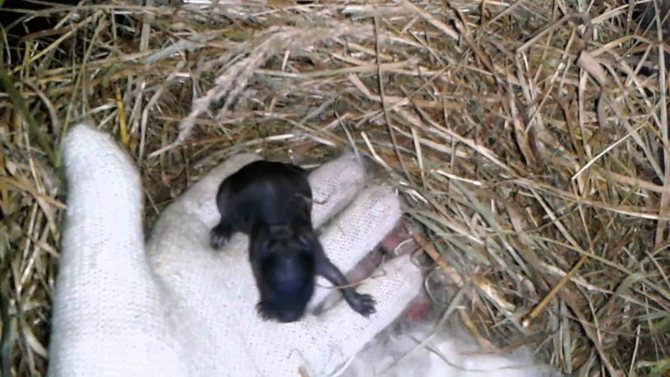

Photo of 2 day old rabbit
Taking into account the rapidity of weight gain, you should adhere to simple rules for feeding babies:
- feed should be extremely highly nutritious and easily digestible: babies need protein in large quantities, as well as a high-quality set of vitamins and minerals;


Babies need food containing B vitamins


In the first days of life, it is very important that the rabbit has a lot of milk for feeding the babies.
- after weaning, all types of food should be introduced into the diet gradually: at least 3 days must be taken to get used to one component;
- the best option for feeding babies is 4 times a day;


It is necessary to feed babies strictly at a certain time.
- after weaning from the mother for the first 2 weeks, the babies should be fed the same food that formed the basis of nutrition during maternal care;


Duplicate the maternal diet
- the older the young, the more varied their nutrition should be: you should not feed the same ingredients to a 20-day-old baby and a 2-month-old rabbit;
- it is not recommended to feed the grass in its pure form: it must first be dried;
- before giving the kids root crops, they should be thoroughly rinsed and chopped;


- all cereals that go to feed babies need to be crushed;
- in addition to basic nutrition, vitamin and mineral supplements should be introduced into the diet.
Basic rules of feeding
Since rabbits are born completely helpless and the loss of a nursing mother is very dangerous, a person must learn to fulfill the functions of a breadwinner. To do this, you need to know some rules and have the appropriate inventory. Newborns need a pacifier, in its role it can be:
- large volume pipette;
- syringe 20 ml;
- a bottle of eye drops;
- a bottle for feeding children of a minimum volume;
- special kit for feeding baby animals.
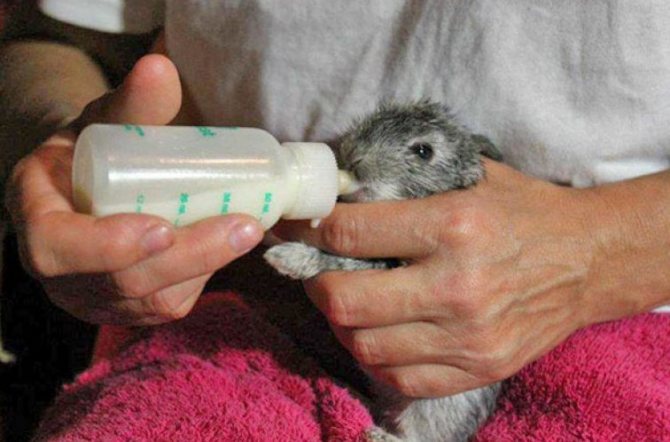

The main rules of feeding:
- The rubber cap from the pipette is put on the selected container, after having made a number of punctures in it.
- Feeding should be close to a natural process.
- For the first 3 days, simply spread the mixture around the mouth.
- In the early days, when babies are still blind, milk just needs to be poured into the mouth. The procedure is started with a few drops. At this time, you need to be careful so that the bunny does not choke.
- The rabbit is kept at this time in an upright position, without squeezing the body.
Did you know? The fertility of rabbits is due to the bifurcation of the uterus, which allows her to bear two offspring at once from different males, conceived at different times.
Phased feeding system
The quieter you go, the further you'll get! Almost every week of babies' life should be accompanied by the introduction of a new component into the diet. Gradually increasing the nutritional level of the feed is a sure step towards raising healthy rabbits.
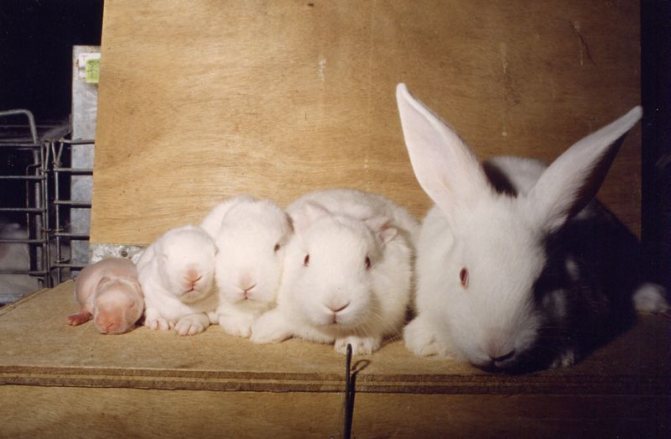

Baby's nutritional patterns are adjusted depending on their age.
Rabbits aged: birth to 2 weeks
Nothing can replace breast milk in terms of energy and nutritional value. Therefore, for the first 14 days, great attention should be paid to the diet of the rabbit herself in order to saturate her milk with all the eared elements necessary for life. Successful lactation depends on the quality of the food fed.
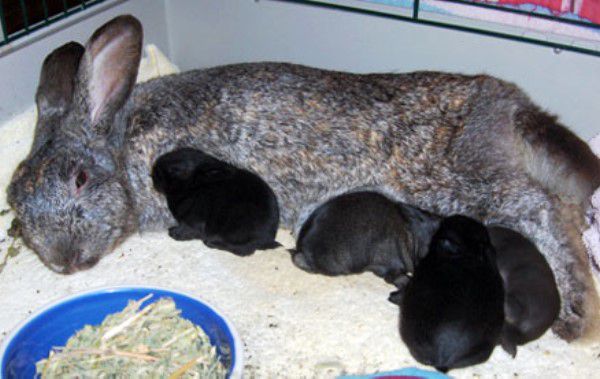

The basis of nutrition for babies at the age of 14 days is mother's milk
In the case when young shoots do not succeed in gaining weight, it is recommended to start feeding with dry food and hay. However, this rule is more an exception than a dogma.
Rabbits 20 days old
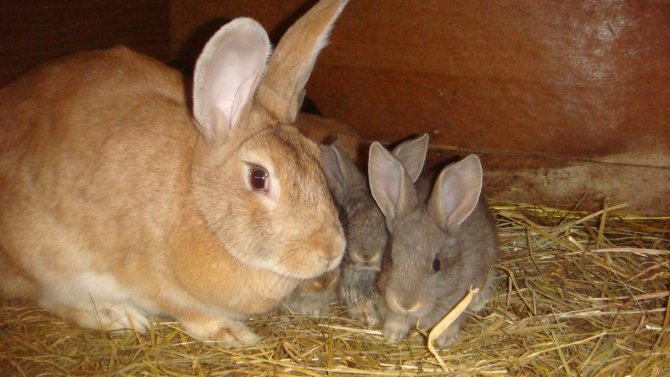

Rabbits at the age of 20 days with their mother
Rabbits at the age of 3 weeks enter adolescence: they can already be given some food that adults actively feed on. Starting from this period, teeth change, which become capable of chewing coarser food.You can feed them dry mixtures based on dried herbs 2 times a week, you should refrain from juicy food for now.
Rabbits 1 month old


At the age of 1 month, hay is an important part of the diet of rabbits.
Only a ten-day gap separates the babies from the previous diet, but they can already be transferred to solid food. Instead of the usual milk, you can give mash, fresh hay and grass. The milk component should be about 20% of the total feed intake. At this stage, fiber is very important: it is it that contributes to the normal functioning of the digestive system.
Rabbits 2 months old


Upon reaching 2 months, the list of acceptable products expands significantly.
The diet of rabbits at the age of 2 months is significantly enriched compared to the 3-week variant. Babies during this period are separated from their mother and gradually begin to introduce bran, grass, fresh hay and dry food into the diet.


In a month, rabbits can already be given grass
In small quantities, the use of juicy feed in the form of vegetables is allowed. It is also important to provide fluffy pets with uninterrupted access to drinking water and to ensure that the feeders are full.
Features of self-feeding
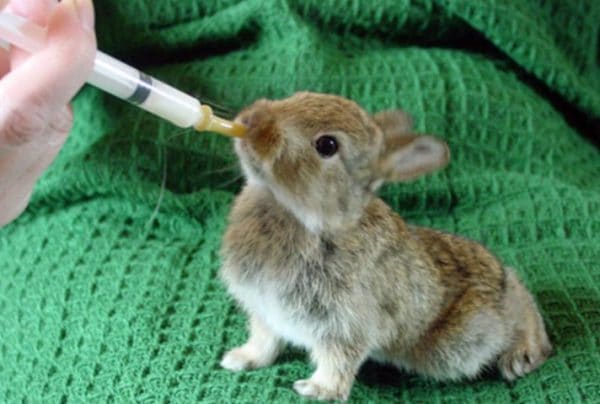

Sometimes it happens that the rabbit stops feeding the offspring.
The optimal type of feed for young animals of any type of animals is mother's milk.
This technique is not always applicable, so it should be understood that self-feeding of newborn rabbits is a rather painstaking exercise that does not differ in one hundred percent survival.
The key factors are the ratio of the following conditions:
- Age of cubs... With mother's milk, useful substances that enhance immunity enter the body of rabbits. No substitute can match them in terms of the amount of benefits they bring.
- Feeding time. For one day, the procedure must be repeated 4–5 times.
- Knowledge of the technology of feeding, the structure of the body of rabbits. For the first 2-3 days, the young organism is not trained to go to the toilet. Before eating, the mother licks her tummies with her tongue from top to bottom, stimulating the rectum to cleanse. The procedure is necessary to avoid guaranteed death of offspring. The absence of a female does not exempt from the need to perform the procedure. You need to do a massage, lightly pressing down on the abdomen with your fingertips, until the rabbit is empty. The procedure is repeated with each feeding for the first few days of life.
If a day has passed since the birth of the rabbit, and he did not eat, it will not work to save him.
It should be borne in mind that predominantly the rabbit's okrol takes place at night., and checking the nest of a pregnant female is required in the morning. Sometimes babies are born in the evening.
Rabbit diet
Upon reaching 40 days, the young are transplanted from the mother, and from that moment their nutrition becomes more varied.
Approximate scheme of feeding young animals
| 1 kg live weight | 100 g of feed units | ||
| dry matter | 62 g | digestible protein | 16-17 gr |
| feed units | 70 g | calcium | 0.6 g |
| exchange energy | 730 kj | phosphorus | 0.3 g |
| carotene | 1 mg | ||
| Vitamin D | 3.00 mcg | ||
| Vitamin E | 2.8 mg | ||
It is helpful to adhere to a specific feeding pattern when planning your feeding schedule. It should be borne in mind that, depending on the season, the feed ratio changes.
In the cold season, the ratio of feed types looks like this:
In the warm season, the scheme changes qualitatively:
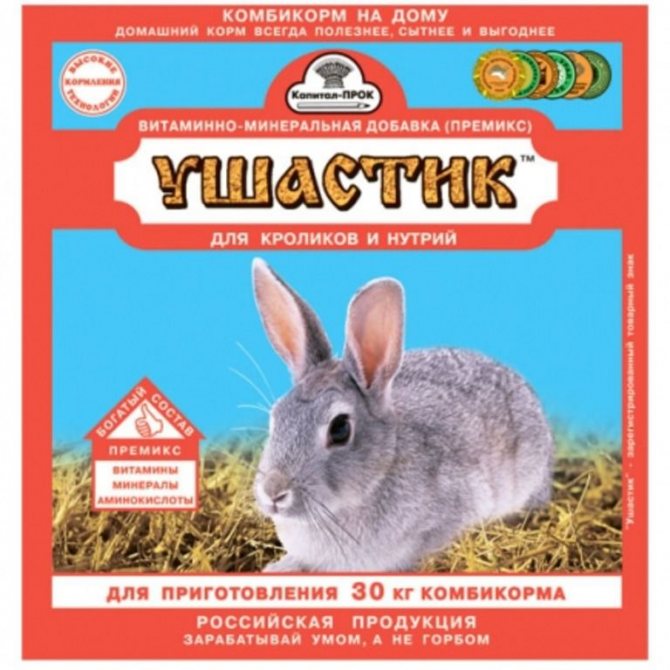

It is good for babies to give 2 grams of premix daily.
A prerequisite is the inclusion in the feeding scheme of nutritious, easily digestible food, especially high-quality hay and cereals. By the way, you can read about how to choose the right grain for rabbits in the article: "What grain to feed rabbits with."
In the summer, it is important to feed babies:
- young grass;
- fish meal;
- compound feed;
- powdered milk;
- oats;
- carrot;
- boiled potatoes;
- bran in small quantities;
- mineral additives in the form of chalk and salt;
- vitamin and mineral complexes.
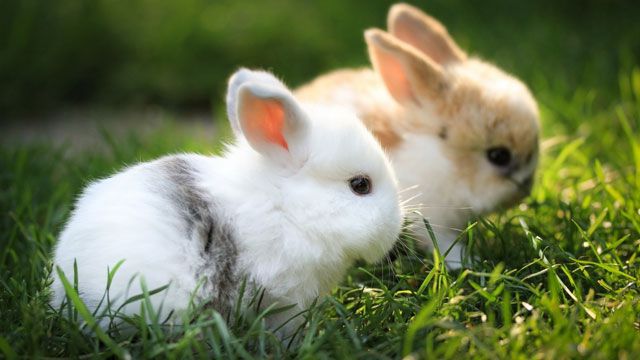

In the warm season, babies, like mature individuals, need to pinch young grass.
The approximate content of the eared menu aged 61 to 90 days
Read also: Freezing celery for the winter at home
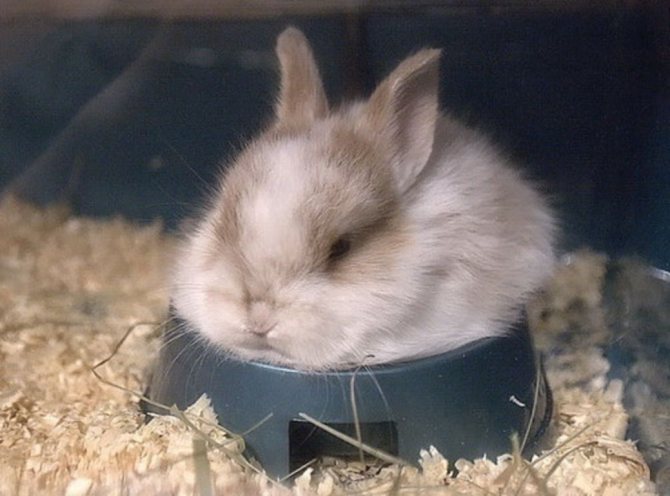

The dosages of the necessary elements increase with the growing up of the baby.
Essential vitamins and minerals
Organic substances with an increased level of biological activity are very important in the early stages of a baby's life. The modern market is rich in all kinds of active food additives in the form of granules and ready-made mixtures, which include vitamin and mineral components. Often, many farmers do not bother buying vitamins separately, but this approach is not entirely correct: about 30% of animals are deficient in certain elements, which leads to serious diseases, especially at an early age.


The level of growth and weight gain, the quality of wool and the amount of fluff directly depend on the degree of saturation of the body with vitamins
Table of required elements and their content in products


"Chiktonik" - one of the best vitamin and amino acid preparations for rabbits
Zootechnicians also recommend buying "Chiktonik", "Aevit", "Prodevit", "E-Selen", the mineral complex "Chika" and bio-iron with trace elements.
You can read more about the drug "Chiktonik" in the article: "Chiktonik for rabbits".
Refusal to feed


Born rabbits are defenseless in the absence of the care and guardianship of the mother, they need breast milk and care, which can be provided by the rabbit who gave birth to them. During the first 3-4 weeks, the main food for the young is mother's milk, which contains vitamins and minerals necessary for the full development of newborn rabbits. With mother's milk, they receive substances that provide immunity from many diseases.
The rabbit does not always become a source of life support for rabbits, for some reason, immediately after birth, she abandons the babies, stops feeding them, or she does not have enough milk to feed a large number of babies. Diseases of the mammary glands (mastitis) may also be the cause.
It is possible to determine that the rabbits are undernourished or hungry by their behavior and the appearance of the brood:
- rabbits have an angular build;
- the coat is tousled and the skin is wrinkled;
- rabbits are restless, constantly squeak;
- cubs try to get out of the nest in search of food.
You can save the offspring if you start feeding the babies in a timely manner, and feed the abandoned ones without a rabbit. Experienced breeders do just that, do not let the offspring die, use all the opportunities.
Complementary feeding recipes
During the period of weaning babies from their mothers and mastering adult nutrition schemes, zootechnicians recommend feeding the babies with compound feed — dry feed mixtures that you can make yourself. The composition of an easy-to-prepare but well-proven compound feed is shown in the table below.
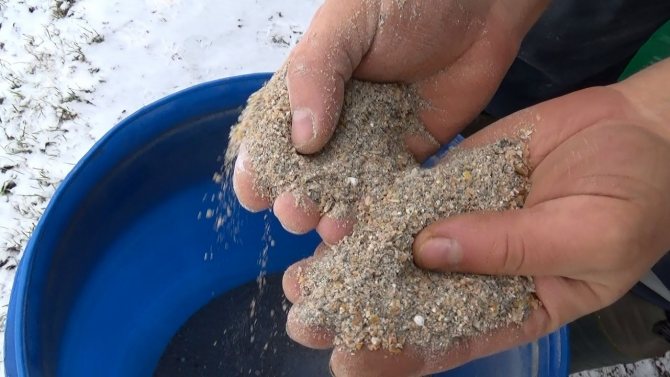

Making compound feed with your own hands is easy
If you stick to this recipe, you can get a steady increase in average of about 1 kg per month.
Diet scheme for rabbits aged 60 days and older
Video - Complementary feeding of young rabbits
Bottle feeding tips
In cases where the rabbit has died or refuses to feed the babies, you should start this responsible mission yourself.
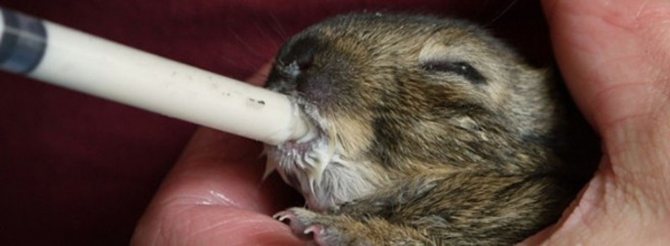

Self-feeding rabbits
We select milk
Only mother's milk can be better than mother's milk! Unfortunately, babies are not always given the opportunity to fully enjoy its most valuable nutritional properties. In cases where this is not possible, you can try to pick up milk that is similar in composition.


The maximum approximate structure is deer milk
Comparison of the nutritional properties of milk from different animals
It is also saturated with proteins and fats, but it seems problematic to get it. Based on these data, it can be seen that the milk of the deer is optimally close in structure to rabbit milk.
So popular all over the world, cow's milk, according to its characteristics, is not entirely suitable for feeding eared ones. Not high enough protein content removes it from the list of potential breast milk substitutes. Dog milk comes next after the deer milk in terms of reliability.
Feeding rules
In the process of self-feeding babies, you should adhere to simple rules:
- purchase dog milk powder at the pet shop;
- dilute it with water, following the recommendations specified in the instructions, and bring the liquid to a temperature of 36 0 С;
- it is necessary to water the babies only from a pipette or a special insulin syringe, in which the needle was previously removed;
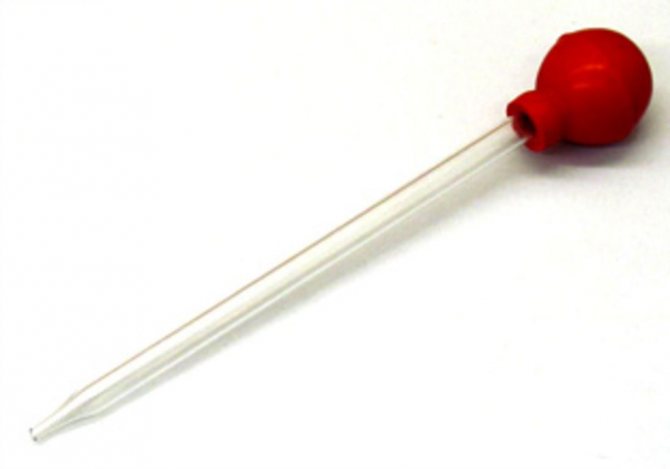

For self-feeding, use a fine pipette
- pouring in milk must be extremely careful: it is very important to avoid getting liquid into the nose, otherwise the baby may choke;


Be careful not to get liquid into the nose during feeding
- overeating should not be allowed: you can determine the level of satiety of the baby by his even, smooth tummy.


The degree of saturation of the rabbit with food can be determined by the smooth tummy
In nature, there are cases when responsible and caring cats fed rabbits at will, but such situations are quite rare.
The nuances of keeping rabbits who are bottle-fed
In the first hours of life, rabbits, deprived of maternal care, as a rule, die. If you react quickly to the situation that has arisen, you can save the kids and raise them healthy.


Bunnies should be placed in a warm place under a lamp.
Tips from experienced farmers for caring for bottle-fed rabbits:
- it is always necessary to have several females at the same time: if one of them abandons offspring, the babies should be placed in the nests of other rabbits;
- if there is no suitable mother, it is recommended to put the babies in a warm place, preferably under the lamp: make sure that the lamp does not burn the fragile little bodies of the rabbits;
- since at this age the eared have not yet learned to empty themselves, it is necessary to massage the tummies: massage should be done only in one direction - from the navel to the hind limbs.
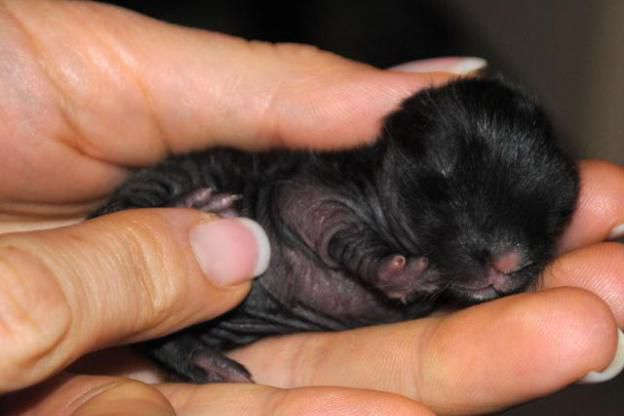

Be sure to massage the abdomen several times a day: this will help the rabbits to empty themselves.
Treat the little ones with all the responsibility and check their condition every few hours.
Replace cow's milk with goat's or branch's milk
After the birth of offspring, the female produces milk saturated with fats and fatty acids. It is 4 times fatter than a cow and allows the rabbit to develop quickly, strengthening its immunity.
If the rabbit refused to feed the offspring, then without feeding the cubs are guaranteed to die.
It is impractical to feed abandoned babies with cow's milk due to its low nutritional value, and for an ornamental animal it is simply dangerous, since it can lead to death.
It is best to purchase dry bough milk at a pet store. It is usually used for raising puppies and is great for raising rabbits. Sometimes babies are given goat milk, in its composition as close as possible to rabbit milk.
Any milk given to rabbits must first be boiled, destroying bacteria that can cause intestinal upset. You can feed the animals only by pre-cooling it to 37 degrees Celsius.
Feeding the eared ears is carried out in small portions, but often.In this case, you need to ensure that they do not have bloating tummies. Read more in the article "What little rabbits are fed with".
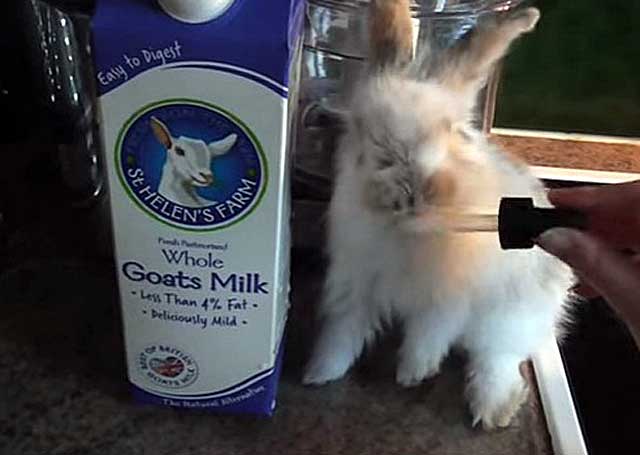

What should not be given to babies?
It is important under no circumstances to feed the kids pasture food: this is fraught with a deterioration in the functioning of their digestive system.
List of prohibited products:
- cookies and sweets;
- mushrooms;
- flour products;
- wet grass;
- spicy and fatty foods;
- waste from fruits and vegetables;
- poisonous plants;
- rotten fruits;
- buttercups;
- tomato tops.


Rabbits are not advised to give wet grass.
Causes of the death of rabbits due to improper nutrition
There are situations when babies die for no apparent reason. Sometimes you should look for the culprits of death in an improperly formulated diet.
Common causes of animal deaths associated with nutritional errors:
- upon reaching 1.5 months, the rabbits are taken away from their mothers, but by this time their digestive system is not yet sufficiently strong. A sudden transition to a new "culinary" level can be fraught with serious consequences for the health of babies, including death;
- stale moldy grain, the degree of spoilage of which can be determined both by its appearance and by a musty smell, can cause serious disruptions in the work of the intestines of the eared;
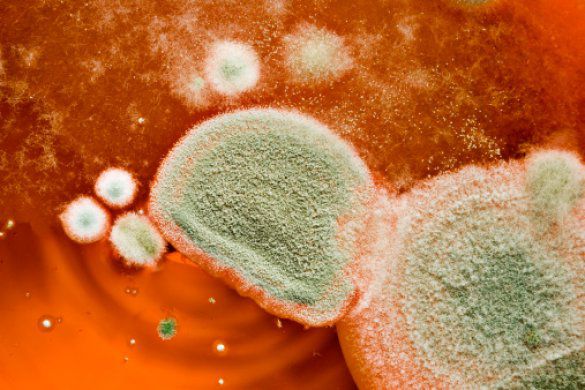

Avoid feeding moldy grain to rabbits.
- Sprouted potatoes can also cause disease in rabbits, especially if the potatoes are rotten or old.


You should refrain from feeding babies with sprouted potatoes.


